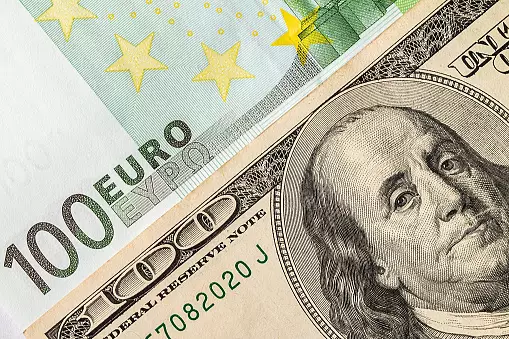The EUR/USD currency pair is currently exhibiting robust signs of strength, trading at approximately 1.1088. This notable increase is attributed to a surge in market speculation surrounding the Federal Reserve’s forthcoming monetary policy adjustments. Recent discussions have magnified expectations that the Fed may opt for a substantial cut in interest rates, with the possibility of a 50 basis point reduction now standing at 45%. This figure reflects a significant rise from 20% just a week prior, revealing a drastic shift in market sentiment.
The implications of the Federal Reserve’s potential decisions are profound, as they weigh heavily on the currency market. The weakening of the US dollar is directly linked to these growing rate-cut expectations, which have led to a decline in US Treasury bond yields. Such shifts inevitably influence the dollar’s overall performance, catalyzing significant movement in pairs like EUR/USD.
Recent economic indicators also play a crucial role in shaping the current landscape. For instance, US import prices saw a more significant drop than anticipated in August, falling by 0.3%, while export prices experienced a decline of 0.7%. These figures signal potential easing pressures on inflation, and they are compounded by an index from the University of Michigan, which showed an uptick in inflation expectations for September.
Conversely, the European Central Bank (ECB) recently reduced its rates; however, it continues to affirm its independence, particularly in response to pressures from member states like Italy. ECB President Christine Lagarde remains steadfast in her message that the bank will not bend to political influence—an essential factor that can stabilize or destabilize the euro against its peers, including the US dollar.
As the markets prepare for the upcoming Federal Reserve meeting—set to commence on Tuesday and conclude Wednesday with key announcements—the focus is sharp. Investors are poised for insights that could materially influence the EUR/USD pair. Market analysts are closely tracking these developments, which are likely to bear significant consequences on overall trading patterns.
Technical analysis further underscores this market’s consolidation range, currently centered at 1.1088. The anticipated price movements suggest potential short-term fluctuations, with projections indicating possible downturns to 1.1055 before any momentum could shift toward higher levels such as 1.1106 and beyond. A ‘Triangle’ pattern in the market suggests a period of indecisiveness that could precede a breakout.
The technical indicators presently indicate an upward trend. The MACD, although positioned below zero, demonstrates an upward trajectory, suggesting momentum could be building. Additionally, the Stochastic oscillator provides further validation to the anticipated downward correction by currently hovering below the 80 mark, signaling an impending shift in momentum.
As traders and investors navigate this complex landscape, each indicator plays a vital role in fleshing out the potential trajectories of EUR/USD. With economic data from both the US and Europe influencing perceptions and expectations significantly, the trading community eagerly awaits developments that could steer the course of this pivotal currency pair in the coming weeks.

